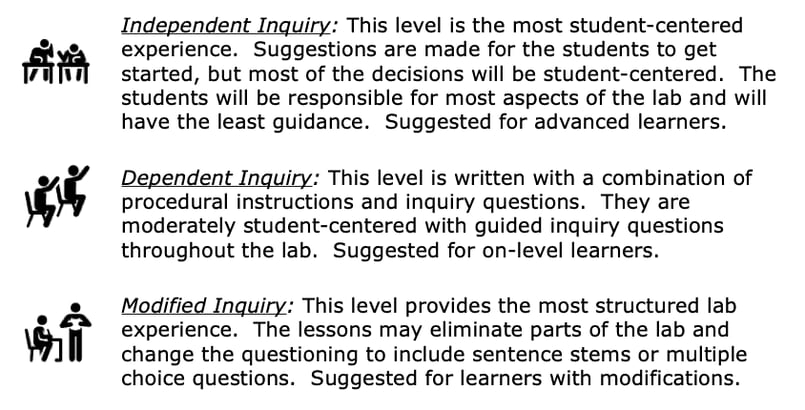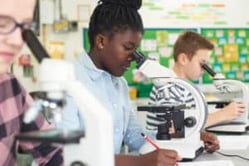Reactivity Inquiry Lab
Middle School Inquiry Lab on Reactivity
In this lab students will make observations about the periodic table and how elements interact with each other. Students will analyze how protons determine what an element is and how valence electrons determine an element’s reactivity.
Each inquiry lab will contain an essential question that will drive the lesson and make students think. For this lesson, the essential question is:
- How does knowing the number of protons and electrons of an element help determine its identity and reactivity?
BACKGROUND INFORMATION AND MATERIALS LIST:
Students will begin the lab by reading the essential question and background information. This can be done individually, as lab groups, or as a whole class. If you consider lab groups, you also might include some type of whole class formative checks before digging into the lab.

Materials List:
- colored pencils
- element model cards
- periodic table for reference
PROCEDURE:
For this lab, students will have to complete four small tasks, each dealing with determining the reactivity of the elements in certain groups based on the number of valence electrons present.
First, students will label element groups on a periodic table and identify which group they belong to based on the number of valence electrons they have (+3, -2). Second, using only the number of protons given, students will have to identify the element shown. Then they will have to create three more examples telling you the number of protons, total number of electrons, and the number of valence electrons.
Third, after determining the number of electrons elements need to gain or lose to become stable, students will have to list and explain which element group will react with the other to maintain a stable reaction. Finally, using the element cards provided with the lesson, students will have to match up as many element combinations they can that will help to equal a full outer shell. Some combinations will have to use multiple cards. Each card will indicate the number of valence electrons the element contains.
CONCLUSION
Students will go back to the essential question and write a CER (Claim, Evidence, Reasoning) to conclude the lab. Once completed, students will reflect back on their learning by answering the following questions:
- Draw a molecule of water (H₂O).
- Why did you have to use two atoms of hydrogen to one atom of oxygen?
MODIFIED AND INDEPENDENT INQUIRY VERSIONS
All of the Kesler Science inquiry labs come with three different modification levels. Each lab is differentiated using the icons below.
STANDARDS ALIGNMENT
TEKS: 8.5B – Identify that protons determine an element’s identity and valence electrons determine its chemical properties, including reactivity.

Download Over $100 in FREE Resources
For Middle School Science
Simply create a login below and gain immediate access to a selection of our Kesler Science product line worth $100 - for FREE. There's a full version of every product type! You'll also join tens of thousands of middle school science teachers who receive timely tips and strategies straight to their inbox.






